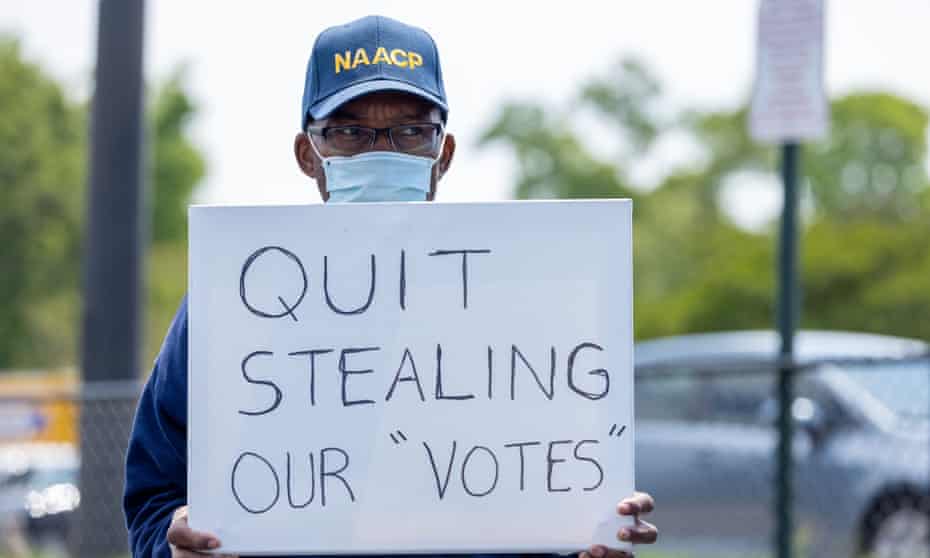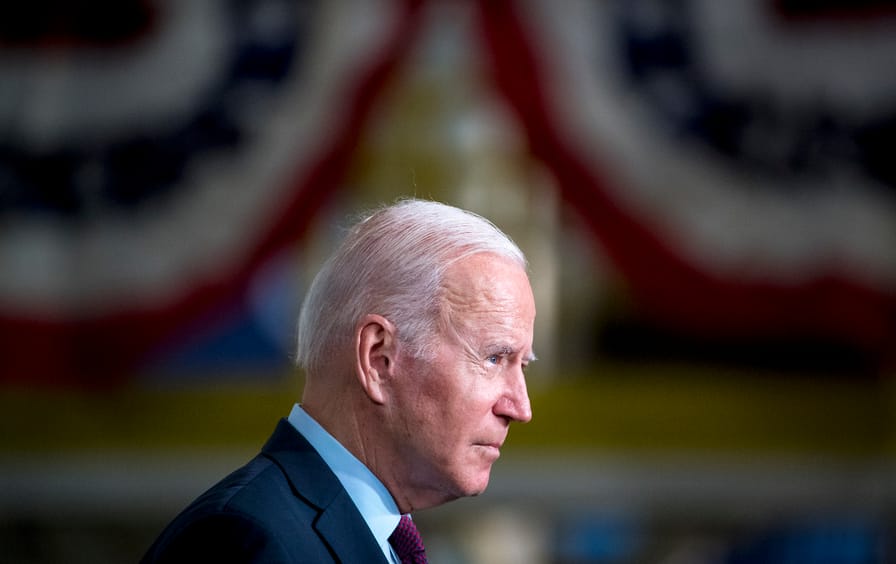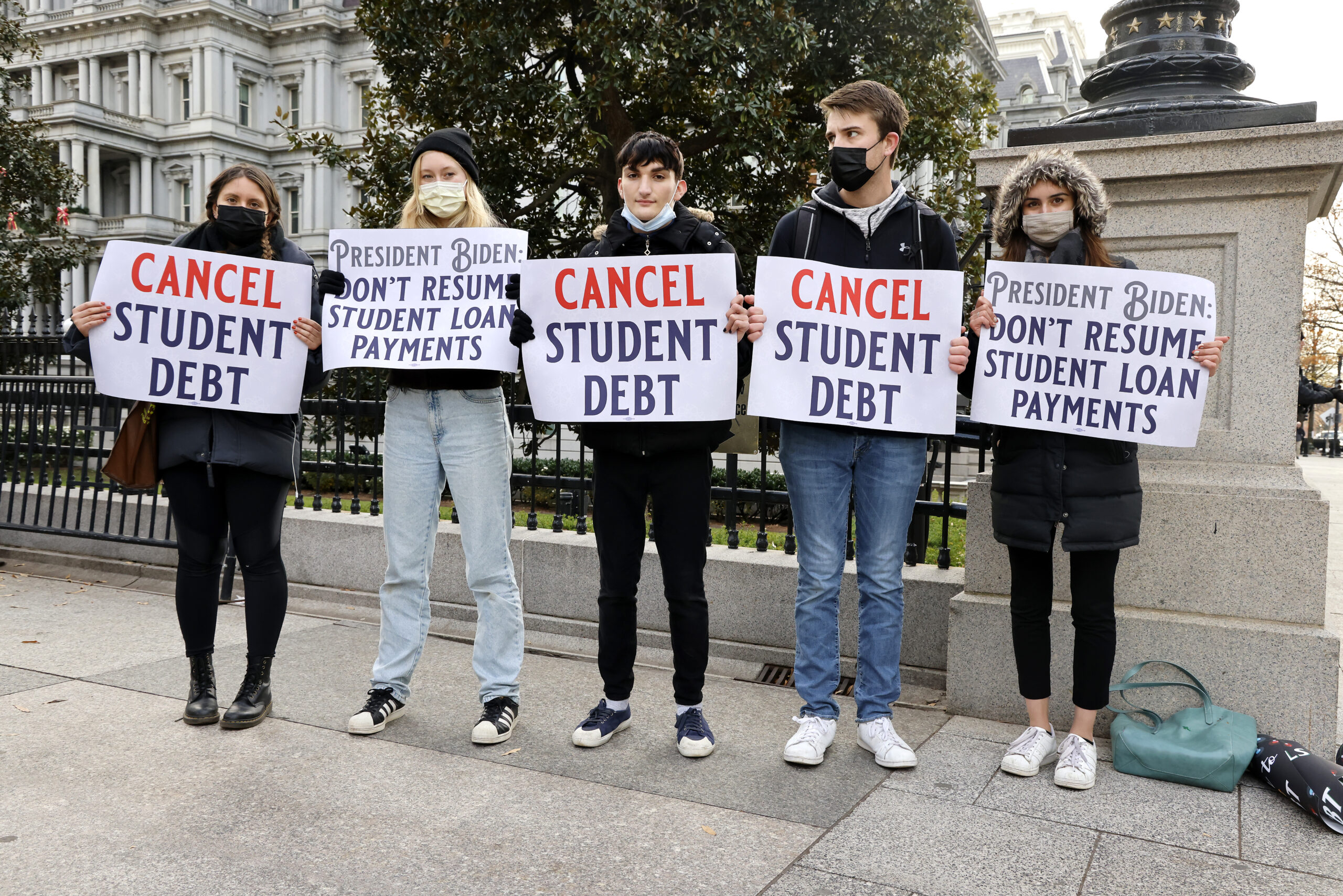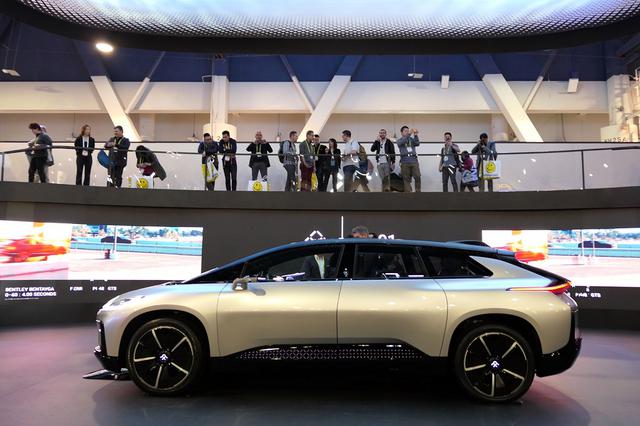
EPA OFFICIAL PREVENTED STAFF FROM WARNING PUBLIC ABOUT WIDELY USED CARCINOGEN
PCBTF is on a list of “green” compounds preferred by the EPA, even though there is ample evidence that it causes cancer.
Sharon Lerner
December 22 2021
EPA Exposed
Part 7
Whistleblowers speak out about the Environmental Protection Agency’s practice of routinely approving dangerous chemicals.

LONG READ
While the assessor worked in the EPA’s New Chemicals division, and the particular paint he was assessing was new, PCBTF is not. The most widely used solvent in the coatings and adhesives industry, PCBTF has been added to products since the 1960s and can be found in ink, caulk, cleaners, stain removal products, polyurethane finishes, primer, graffiti remover, paint for cars, steel and concrete, and garage floors. The chemical has also been used to make other chemicals, including dyes, pharmaceuticals, and pesticides. Each year, between 10 and 50 million pounds of PCBTF are used in the U.S., according to the most recent data from the EPA, and countless workers are exposed at both paint and car manufacturing plants.
PCBTF is on a list of “green” compounds preferred by the EPA because, when used instead of some other solvents, it can help reduce ozone levels. However, while that designation boosts the use of PCBTF, it doesn’t take into account its health effects. Nor has the EPA assessed PCBTF under the updated Toxic Substances Control Act, as is the case for the vast majority of chemicals now in use. In fact, because it was introduced before the Toxic Substances Control Act was passed in 1976, the safety of the compound had not been reviewed at all. Rather, PCBTF was grandfathered in, along with more than 60,000 chemicals that were on the market before the law took effect.
While the EPA had not assessed the safety of PCBTF, other scientists had done so. From a quick search, the toxicologist was able to find concerning evidence of its harms dating back decades. In a 1983 study of 4,000 workers exposed to PCBTF at an Occidental Chemical Corporation plant in Niagara, New York, researchers documented elevated rates of stomach and respiratory cancers. A 2009 report from the National Toxicology Program cited those findings as well as studies showing that mice exposed to the chemical developed liver cancer. The report also noted experiments that had shown the chemical to cause tremors and hyperactivity in rats, as well as lung problems in pups who had been exposed in the womb.
Six months before the case of the new paint landed on the toxicologist’s desk, California had listed PCBTF under Proposition 65, a law that requires public warnings for carcinogenic chemicals. The state’s Office of Environmental Health Hazard Assessment had made the decision based on evidence that the chemical had caused liver tumors in both male and female mice. And just one month before he began considering the new paint, the International Agency for Cancer Research had deemed PCBTF a likely human carcinogen.
In an emailed response to questions for this story, EPA spokesperson Lindsay Hamilton wrote, “While one can accurately state that many of the chemicals that were grandfathered into the 1976 law may pose risks and remain unrestricted under TSCA [Toxic Substances Control Act], the PMN [premanufacture notification] substance subject to this inquiry was not handled inappropriately or inconsistently with TSCA.”
Just a Solvent
The toxicologist found himself in a bind. He felt he should incorporate the information about PCBTF into his assessment. After all, the law requires the agency to determine whether each new chemical substance presents an unreasonable risk to human health or the environment. His job as a human health assessor was to flag chemicals and products that posed an unreasonable risk; surely workers and consumers who breathed in the paint — and thus PCBTF — were facing a risk. When he asked his colleagues, they agreed that the assessment should include the dangers of the solvent.
Yet one official, who holds a senior leadership role in the agency, felt that the dangers of PCBTF should not be mentioned in the assessment. In a December 18, 2019, email she described the chemical as “just a solvent there as a part of making it,” according to screenshots of the email that the whistleblowers shared with The Intercept. (In the hopes of minimizing retaliation against them, the whistleblowers are choosing not to disclose the official’s name.)
Although consumers and workers would be exposed to the chemical regardless of the manufacturers’ intentions, she argued that because PCBTF was not intended to be an ingredient in the final product, its health effects should not be considered in the assessment.
At a meeting that same day, the official, who holds a higher rank within the agency than all the others engaged in the discussion, pointed the scientists to a memo — or rather, she threw it at them, as several of the whistleblowers recently recalled. The 1985 memo addressed when the EPA should assess the risk from a new chemical substance. The official saw it as evidence that PCBTF should not be considered when assessing the paint and told the toxicologists assembled at the meeting to “Read it. Follow it.”
In response to questions from The Intercept, the EPA’s Hamilton referred The Intercept to the same memo and said that it supported the idea that the substance fell under the polymer exemption, which allows manufacturers to avoid submitting certain chemicals for assessment. In this case, however, the company had not opted to submit the product for an exemption but rather for a review.
Most of the scientists who do assessments interpreted the memo differently, pointing out in discussions with the official that some sections seemed to support the inclusion of PCBTF in the assessment and noting that others laid out the possibility of referring the compound to the Existing Chemicals program for assessment. The memo also specified other actions to be taken if the New Chemicals division did not assess the product.
“There’s a final paragraph stating that if there is nothing done, if we’re not going to do the review ourselves, at a bare minimum, the risk managers should be communicating what we found to the chemical company so that they know that they have to take some sort of action,” said Sarah Gallagher, a human health assessor in the Office of Pollution Prevention and Toxics and one of five agency scientists who expressed their support for including the dangers of PCBTF in the assessment of the new paint.
“It does seem that we need to be concerned about the risk of the new chemical plus existing chemicals that pose risk,” one of the toxicologists on the EPA staff wrote in an email to her colleagues. “I think the human health assessors need to feel comfortable that we are doing our best to protect public health.”
Another concurred, noting that “several of us spoke to [New Chemicals Management Branch] in mid-October about this and they supported assessing residuals, impurities” for risk assessments.
By the time they were debating how to handle the assessment of the product that contains PCBTF, tensions between staff who assess the safety of new chemicals and their managers had already reached a point of divisionwide discomfort, with those responsible for writing chemical assessments routinely feeling pressured to dismiss or downplay health hazards they found. They had previously come into conflict with this particular agency leader, who had discouraged them on multiple occasions from noting evidence of the dangers of chemicals in assessments and even, in a few cases, deleted the information they had included in documents without asking or informing them.
In the case of PCBTF, the scientists found themselves once again trying to convince their superior to allow them to do their jobs. They did not succeed.
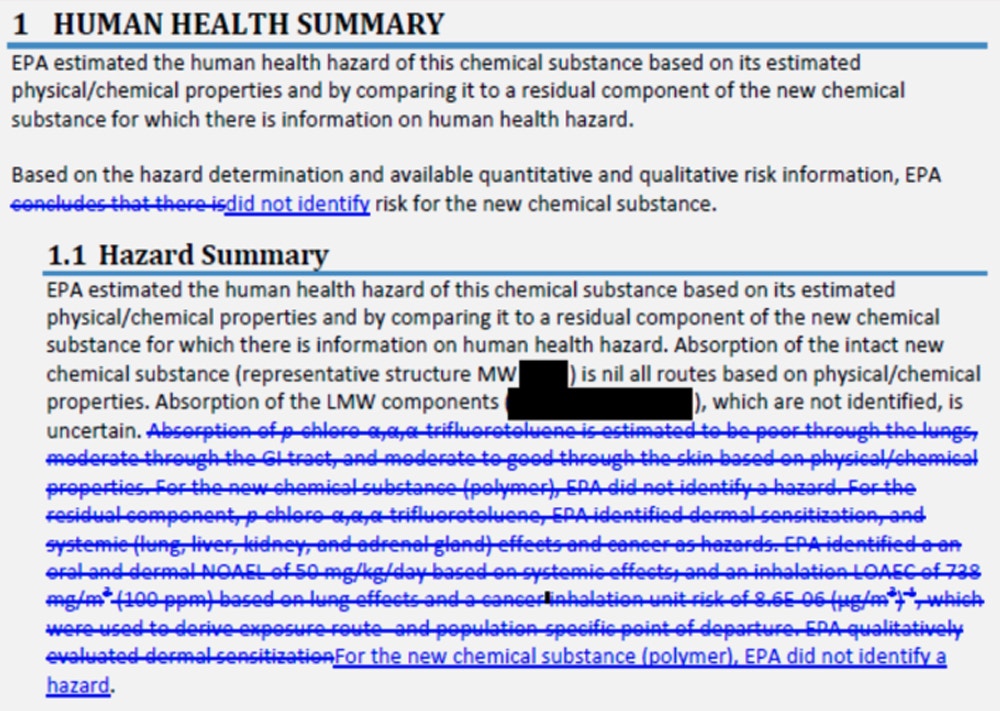
Screenshot: The Intercept
Delete All References
In a version of the document entered into the division’s computer system on December 17, the toxicologist had included the information about PCBTF, noting that the chemical can be absorbed through the lungs, gastrointestinal tract, and skin. He also identified cancer as one of its hazards, along with liver, kidney, lung, and adrenal gland effects, and calculated the cancer risk associated with precise amounts of the paint. But the next day, hours after the contentious meeting in which the official had tossed the memo, she inserted a note into the assessment, asking the assessor to delete all references to PCBTF.
The toxicologist did not delete the information, so the official did so herself. On December 18, she posted an updated version of the assessment that crossed out the list of PCBTF’s effects and the exposure levels above which it could be expected to cause cancer. In its place, the official inserted a new sentence: “For the new chemical substance (polymer), EPA did not identify a hazard.” The next day, she signed off on the document she had changed, publicly declaring that the agency had found that it did not pose a hazard.
The removal of the scientifically accurate warning that could have prevented people from getting cancer left the scientists who do chemical assessments feeling powerless to do their jobs — and unable to win an argument at the agency on its scientific merits. “You’ve got multiple people saying, hey, this deserves more careful consideration. But she made a call, overrode everybody, shut it down, and we never talked about it again,” said Martin Phillips, a chemist and human health assessor who was involved in the debate over PCBTF.
“Their question is, ‘How little can we get away with? What can we get off our plate?’”
The EPA is both underfunded and subject to specific laws about how assess chemicals, yet Phillips said it could have taken several possible actions to alert the public about the paint. “But the conversation is not, ‘What can we do within these limitations?’” he said. “Instead their question is, ‘How little can we get away with? What can we get off our plate?’”
According to Phillips, the resistance to incorporating the information about the carcinogen into the assessment is in keeping with a larger ethos within the agency of downplaying the harms of chemicals. “When new information comes in that shows that something is less toxic than what we thought, that gets used right away,” he said. “But if it shows that there are new concerns that we weren’t aware of before, suddenly the level of scrutiny goes way up.”
Failure to Follow the Law
Had the original assessment been finalized, the company that made the paint would have been required to include the cancer information in its safety data sheet. That document can guide factory policy, encouraging the use of masks, gloves, and other protective gear, although many consumers and workers are exposed to dangerous chemicals despite the warnings.
The failure to protect workers from exposure to this carcinogen shows that an update to the Toxic Substances Control Act, which passed in 2016, is not working as intended, according to David Michaels, who headed the Occupational Safety and Health Administration during the Obama administration. “The EPA is supposed to be considering whether workers’ exposures could be toxic,” said Michaels. “This is a failure of EPA to follow the law.”
In its statement, the EPA’s Hamilton emphasized the agency’s commitment to following the science in environmental regulation. “Restoring scientific integrity has been a top priority across the Agency since the beginning of the Biden-Harris Administration. Significant efforts are underway to understand and address concerns that have been raised. We are continuing to make improvements to the program and are cooperating fully with the ongoing IG investigation,” she wrote. “EPA’s new chemicals program has been engaging in targeted, all-hands-on deck efforts to catalogue, prioritize and improve its procedures, recordkeeping and decision-making practices related to review and management of new chemicals under TSCA.”
Hamilton noted several steps the agency has already taken to improve scientific integrity, including implementing new processes for scientists to elevate their concerns and get a review wherever there’s disagreement; providing a series of scientific integrity trainings for the entire Office of Chemical Safety and Pollution Prevention; and hiring an independent contractor to identify potential workplace barriers and opportunities for organizational improvement within the office.
If they had the knowledge that the new paint causes cancer, auto body and detailing shops, car manufacturers, as well as other companies and consumers might choose to use another one in its place. But the product is now commercially available without the warning that would give the public at least a chance to make that informed choice.
The whistleblowers are not allowed to disclose its name or anything else about the paint.
Meanwhile, the whistleblowers are not allowed to disclose its name or anything else about the paint because, as is almost always the case, the manufacturers submitted those details to the agency as confidential business information. The EPA staffers could face disciplinary action, including losing their jobs, if they disclosed those details. They can identify PCBTF without penalty because the science showing its carcinogenicity is public.
The case of the mysterious paint points to even bigger problems in the EPA’s chemical regulation. The paint is not the only product that contains PCBTF, yet none of the safety data sheets reviewed by The Intercept for several products that contain it identified the risk of cancer. And PCBTF is hardly the only chemical for which the EPA has failed to update regulations based on the most recent science.
“We never go back and review these cases and put on new restrictions for their use,” said Gallagher, the human health assessor at the Office of Pollution Prevention and Toxics.
A division of the agency’s Office of Chemical Safety and Pollution Prevention is tasked with updating the assessment of existing chemicals. But so far it has only begun reviewing a tiny fraction of the chemicals in use. In December 2019, as the paint case was moving its way through the agency, the EPA was choosing 20 dangerous substances to be evaluated under the updated chemicals law, but those “high priority” assessments are still not finalized. According to Hamilton, those assessments are expected to take three and a half years to be completed. At that rate, it will take the agency more than 7,000 years to review the more than 40,000 chemicals now in use.
Meanwhile, there is no clear way to ensure that the agency updates its assessments — or even informs anyone — when it learns about the harms of a chemical. Even when manufacturers provide the EPA with clear evidence that their products present a serious threat to health and the environment, the agency almost never makes the public aware of that information. In the case of 2,104 chemicals that were the subject of “substantial risk reports” that manufacturers sent to the EPA since January 2019, the agency has failed to update its public database and has not even made the reports available through the computer systems most frequently used by chemical assessors. According to Hamilton, the single person who had been responsible for posting the reports to the EPA’s public database retired in December 2018, and the agency has not had the funds to replace them. “The Biden-Harris Administration has asked for significantly more resources for this program in the 2022 budget,” she wrote.
For the EPA assessors who brought the case of the paint to the attention of The Intercept and filed a report about it with the EPA’s inspector general, the overarching difficulty of protecting people from toxic chemicals makes this particular failure all the more galling. The vast majority of substances never come before EPA toxicologists for review, so the public has no opportunity to learn if they cause cancer and other health problems.
Yet in this case, the agency scientists were being asked to weigh in on a product that poses a clear danger, and they weren’t allowed to inform the public. A high-ranking official in an agency that is supposed to protect human health and the environment stood in their way, an experience they found familiar, frustrating — and baffling.
“Why would someone hear that there’s a cancer risk for workers and not even let people know about it?” asked Gallagher. “Why would they think that that’s something that can just be ignored?”



